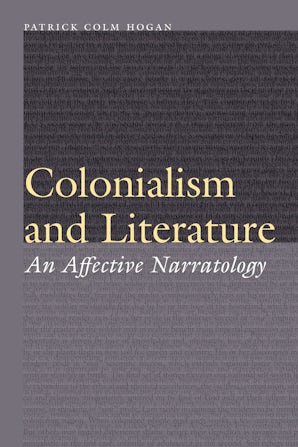About the Book
In earlier work Patrick Colm Hogan argued that a few story genres—heroic, romantic, sacrificial, and others—recur prominently across separate literary traditions. These structures recur because they derive from important emotion-motivation systems governing human social interaction, such as group pride and shame.
In Colonialism and Literature Hogan extends this work to argue that these genres play a prominent role in the fashioning of postcolonization literature—literature encompassing both the colonial and postcolonial periods. Crucially, colonizers and colonized people commonly understand and explain their situation in terms of these narrative structures. In other words, the stories we tell to some degree simply reflect the facts. But we also tend to interpret our condition in terms of genre, with the genre guiding us about what to record and how to evaluate it. Hogan explores these consequential processes in theoretical and literary analysis, presenting extended, culturally and historically specified interpretations of works by Pádraic Pearse (Ireland), Ngũgĩ wa Thiong’o (Kenya), Yasujiro Ozu (Japan), J. M. Coetzee (South Africa), Margaret Atwood (Canada), Rabindranath Tagore (India), Abderrahmane Sissako (Mali), and Dinabandhu Mitra (India).
Author Bio
Patrick Colm Hogan is Board of Trustees Distinguished Professor Emeritus, Department of English, Program in Comparative Literature and Cultural Studies, and Program in Cognitive Science, at the University of Connecticut. He is the author of more than twenty-five books, including Affective Narratology: The Emotional Structure of Stories (Nebraska, 2011) and Imagining Kashmir: Emplotment and Colonialism (Nebraska, 2016).
Praise
“With characteristic erudition and lucidity, Hogan examines how emotions often produced by postcolonial conditions serve as engines that drive certain kinds of prototype stories found across cultures. Hogan’s work is exemplary affective narratology and will generate much future research.”—Sue J. Kim, author of On Anger: Race, Cognition, Narrative
“Hogan writes in a remarkably accessible way and develops arguments through easy-to-follow examples. He has quite a gift for distilling often highly specialized research into terms where its relevance to nonspecialists can readily be discerned. He also deftly interconnects multiple lines of interdisciplinary scholarship. Mastery of subject, accessibility, and sensible argument are admirably merged. It is hard to imagine anyone working in any of the three primary fields engaged here who would not enjoy and benefit from this work.”—Donald R. Wehrs, author of Ethical Sense and Literary Significance: Deep Sociality and the Cultural Agency of Imaginative Discourse
Table of Contents
List of Illustrations
Acknowledgments
Introduction: Imperialism and Its Stories
Chapter 1: Colonialism, Emotions, and Narrative
Chapter 2: Idealized Sacrifice: Pádraic Pearse, Attachment Love, and the 1916 Easter Uprising
Chapter 3: Ambivalent Sacrifice and Allegorical Love: Shame and Desire in Ngũgĩ wa Thiong’o’s A Grain of Wheat
Chapter 4: Family Separation and Reunion: Attachment and Mirth in Yasujiro Ozu’s Early Summer
Chapter 5: Disfigured Heroism and the Possibility of Romance: War and Love in J. M. Coetzee’s Waiting for the Barbarians
Chapter 6: Allegory and the Heroic Epilogue: Guilt and Disfigured Genres in Margaret Atwood’s Surfacing
Chapter 7: Minor Genres: Revenge in Rabindranath Tagore’s “Punishment,” Crime in Abderrahmane Sissako’s Bamako, and Seduction in Dinabandhu Mitra’s The Indigo Planting Mirror
Afterword: A Note on the Psychology of Stories and the Psychology of Colonialism
Notes
Bibliography
Index
